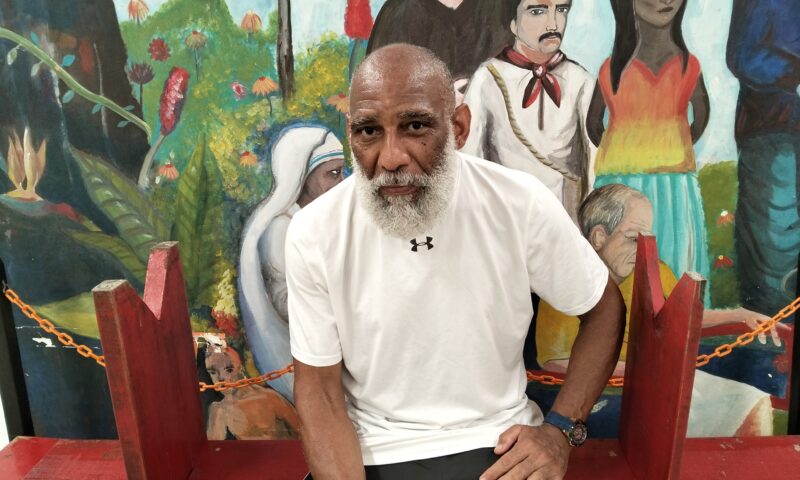California Expose
A Great Divide: The Election Fight for California’s Schools

An election campaign now being fought almost completely out of public view could radically alter the way California’s school children are taught. If Marshall Tuck unseats incumbent Superintendent of Public Instruction Tom Torlakson, the state’s public education system could become a laboratory for a movement that prizes privatization and places a high value on student test scores over traditional instruction. The contrasts between the two top contenders in the nonpartisan race could not be more dramatic – nor could the stakes for the country’s largest education system.
The 40-year-old Tuck is a Harvard Business School graduate who has worked as an investment banker for Salomon Brothers and as an executive at Model N, a revenue-management software company. He is a former president of Green Dot Public Schools, a charter school operation in Los Angeles, and later served as the first head of the Partnership for Los Angeles Schools — former Mayor Antonio Villaraigosa’s controversial education nonprofit that tried to improve 17 low-performing public schools, with mixed results.
Tuck’s candidacy is supported by the same mix of wealthy education privatizers, Silicon Valley and entertainment money, hedge fund and real estate interests that backed privatization candidates in the 2013 Los Angeles Unified School District school board election — when billionaire businessmen such as Eli Broad and Michael Bloomberg gave large campaign contributions to an unsuccessful effort to defeat board member Steve Zimmer. (The Broad Residency, an education management program operated by the Broad Foundation, lists Tuck as an alumnus.)
For additional interview quotes, see Q&A excerpts with Marshall Tuck and Tom Torlakson
“The contest between Mr. Tuck and Superintendent Torlakson couldn’t be starker in every way,” says Steve Zimmer. “Superintendent Torlakson is a lifetime public servant. He’s an educator, he’s a legislator and he’s kind of a [policy] wonk. In contrast, Mr. Tuck is a business man. I’m not sure there’s anybody more engaged at running schools like a business.”
In conversation Tuck presents an affable, conciliatory persona and seems at pains to play down differences between the movement he represents and the educators who oppose it through their unions, several of which are financial supporters of Capital & Main.
“There’s no question that the teachers union has a lot of influence on the state, but I think they get too much negative credit for all the problems,” Tuck tells Capital & Main during a lengthy interview at his bare-bones campaign office on Venice Boulevard in Los Angeles. Then, almost in mid-sentence, he appears to change his mind about teachers unions. “Right now,” he continues, “their seat at the table is too big and they have too much influence over education policy.”
Tuck has spent almost no time as a classroom instructor, while the 64-year-old Torlakson is a veteran science teacher and track coach. Torlakson, who is still a teacher on leave from Contra Costa County’s Mount Diablo Unified School District, says he usually teaches one community college course every year. He was elected as California’s 27th State Superintendent of Public Instruction in 2010 after serving in the state legislature. The two men also face longshot candidate Lydia Gutierrez, who lost a bid for superintendent in the 2010 primary. If no candidate receives more than 50 percent of the June primary vote, a runoff election between the two frontrunners will take place in November.
Torlakson has received substantial financial support from unions and celebrates his closeness with teachers. “I’m happy to be aligned with teachers – classroom teachers know me and trust me,” he says in a telephone interview.
A significant indication of what a future Tuck administration’s relations with teachers might look like can be found in his embrace of a lawsuit that seeks to erase nearly a century of teacher job protections, including seniority rights. The lawsuit, Vergara v. California, is currently being tried in Los Angeles Superior Court and names Torlakson as a defendant.
“I’m supportive of the case,” Tuck says. “I think that the changes they’re asking for are good for kids and make sense for California schools.” He points out that he recently wrote a commentary for LA School Report backing the case. Tuck also believes in the contentious Parent Trigger law, which has opened the door for charter schools to take over public schools and is strongly supported by conservatives and school privatizers. Torlakson voted against the law in 2009 when he was a member of the state Assembly.
Surprisingly, even those who follow the politics of education have paid little attention to the Tuck-Torlakson battle, which has received scant media coverage so far. John Rogers, director of the University of California, Los Angeles’ Institute for Democracy, Education and Access, suggests that influence over education policy has shifted somewhat from the superintendent to the California State Board of Education. The board’s current president is Michael Kirst, who was appointed by Governor Jerry Brown. Kirst had served on the state board of education under Brown in his first term as governor in 1975.
Nonetheless, Rogers said that the state superintendent retains the power to use a “bully pulpit” to articulate a vision for public education. For Tuck, that means streamlining what he characterizes as California’s bloated education code, which he says is a big impediment to making needed changes.
“We can’t run a school that way,” he says, holding the code in his hand. “You call the state and say, ‘How can we actually drive change?’ and the state says, ‘There’s nothing you can do about it.’ It’s in the 2,300-page State Education Code, in four-point font.”
To defeat Torlakson, Tuck will have to convince voters that his opponent – not low funding levels – are responsible for California’s dire academic standings. He will also need to persuade Californians that what he lacks in classroom experience he makes up for in his determination to fundamentally restructure the state’s educational system.
“Our state is 45th in the country in terms of achievement in math and reading,” Tuck says. “I mean, California is the wealthiest state in the nation, the most innovative state in the nation, we’ve got the entertainment capital of the world, the innovation capital of the world, and yet we’re 45th in achievement.”
Tuck says his experiences running Green Dot charter schools and overseeing the Partnership for Los Angeles Schools are at least as relevant as teaching experience, and believes the current superintendent, despite his classroom experience, is out of touch with the state’s education needs.
“I think the last time he’s actually been a classroom teacher was in the early 1980s,” Tuck says. “We’re talking about 30-plus years ago. I taught for a year. I taught internationally. My work has been running school systems and building, and not teaching, although I have actually been in front of kids, carrying a course load, teaching groups of kids in a classroom both in Zimbabwe and in Thailand.”
But in the end it’s Tuck’s perceived adversarial position toward the men and women who teach, and the labor groups that represent them, that sets him apart from Torlakson.
“There’s no question that I’m focused on changing the status quo in schools in California,” he says. “If that feels like a threat, then that’s maybe what it is.”

-

 Latest NewsNovember 19, 2025
Latest NewsNovember 19, 2025How Employers and Labor Groups Are Trying to Protect Workers From ICE
-

 Latest NewsNovember 18, 2025
Latest NewsNovember 18, 2025Future of Special Education at Risk, Teachers Say, as Trump Moves to Cut Staff and Programs
-

 The SlickNovember 18, 2025
The SlickNovember 18, 2025After Years of Sparring, Gov. Shapiro Abandons Pennsylvania’s Landmark Climate Initiative
-

 Latest NewsNovember 17, 2025
Latest NewsNovember 17, 2025In South L.A., Black and Latino Neighbors Unite Against ICE as Systems Fail
-

 StrandedNovember 25, 2025
StrandedNovember 25, 2025‘I’m Lost in This Country’: Non-Mexicans Living Undocumented After Deportation to Mexico
-

 Column - State of InequalityNovember 21, 2025
Column - State of InequalityNovember 21, 2025Seven Years Into Gov. Newsom’s Tenure, California’s Housing Crisis Remains Unsolved
-

 Column - State of InequalityNovember 28, 2025
Column - State of InequalityNovember 28, 2025Santa Fe’s Plan for a Real Minimum Wage Offers Lessons for Costly California
-

 The SlickNovember 24, 2025
The SlickNovember 24, 2025California Endures Whipsaw Climate Extremes as Federal Support Withers

